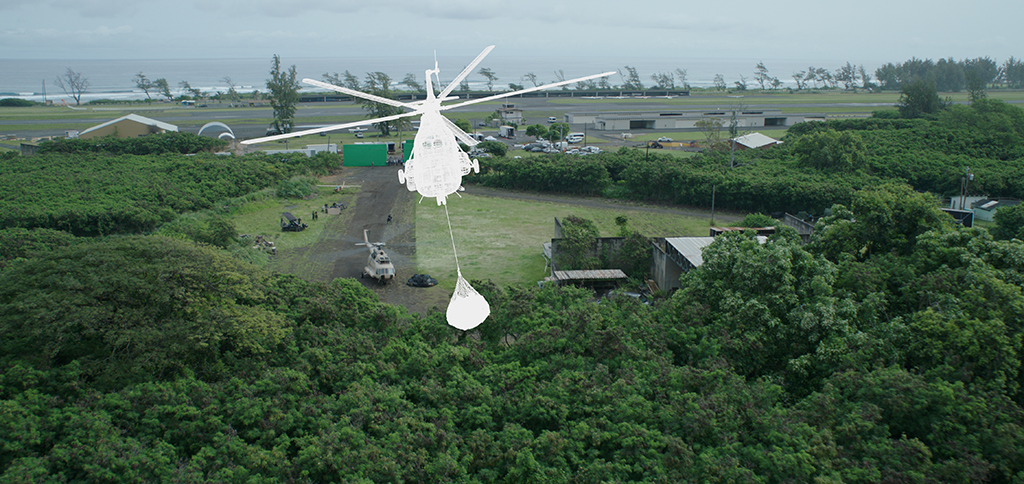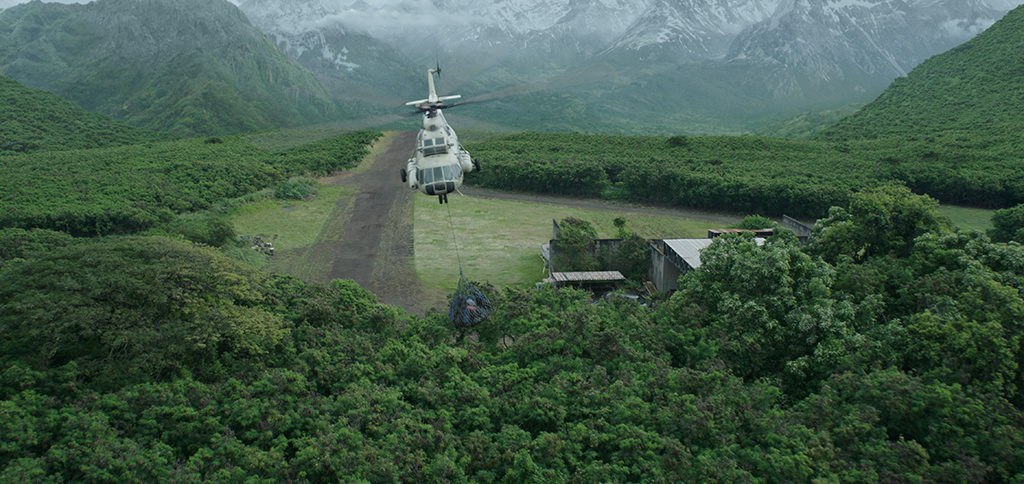By TREVOR HOGG
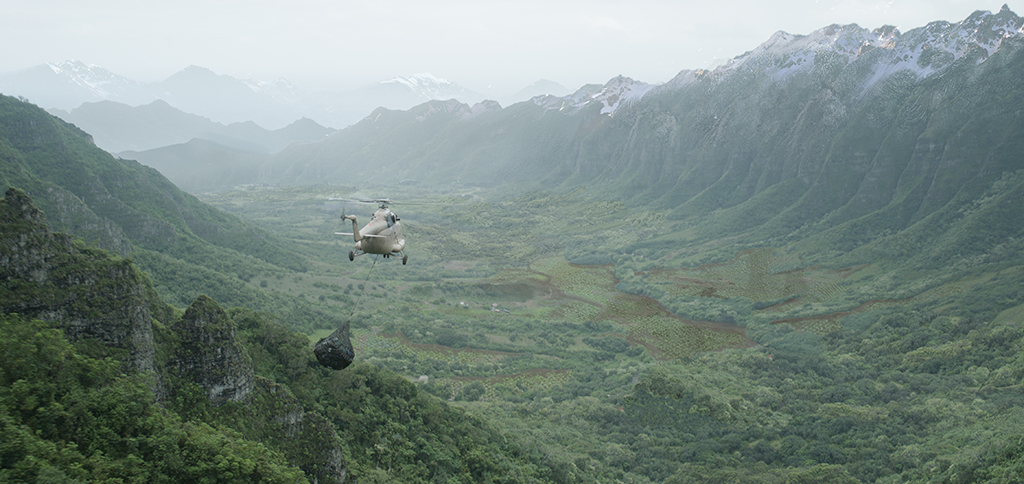
By TREVOR HOGG

Former Delta Force soldiers join together to rob a Columbian drug lord and undertake a harrowing Mi-8 helicopter flight through the Andes with their precious cargo in Triple Frontier, a Netflix original action film directed by J.C. Chandor (A Most Violent Year) and starring Ben Affleck, Oscar Isaac, Charlie Hunnam, Garrett Hedlund and Pedro Pascal. Production VFX Supervisor Mark Russell (Deepwater Horizon) reunited with Chandor and recruited DNEG to digitally enhance the pivotal and signature action sequence.
The mantra for Chandor and Russell was that everything had to be grounded in reality and told from the characters’ point of view. “We went on location for every single scene and therefore had something to work off of,” states DNEG VFX Supervisor Chris Keller. “There were bluescreen and greenscreen on set, but more often than not we didn’t end up using them. In fact, all of the helicopter interiors were shot on a white screen which was a strategic choice; it generated a natural light that was in line with the entire look of the film.” The helicopter buck was shot outside of a warehouse studio and placed on a hydraulic gimbal with six axes of motion. “That entire sequence of them flying up to the mountain and then crashing down was heavily previs’d so we could program the buck to simulate the same actions.”
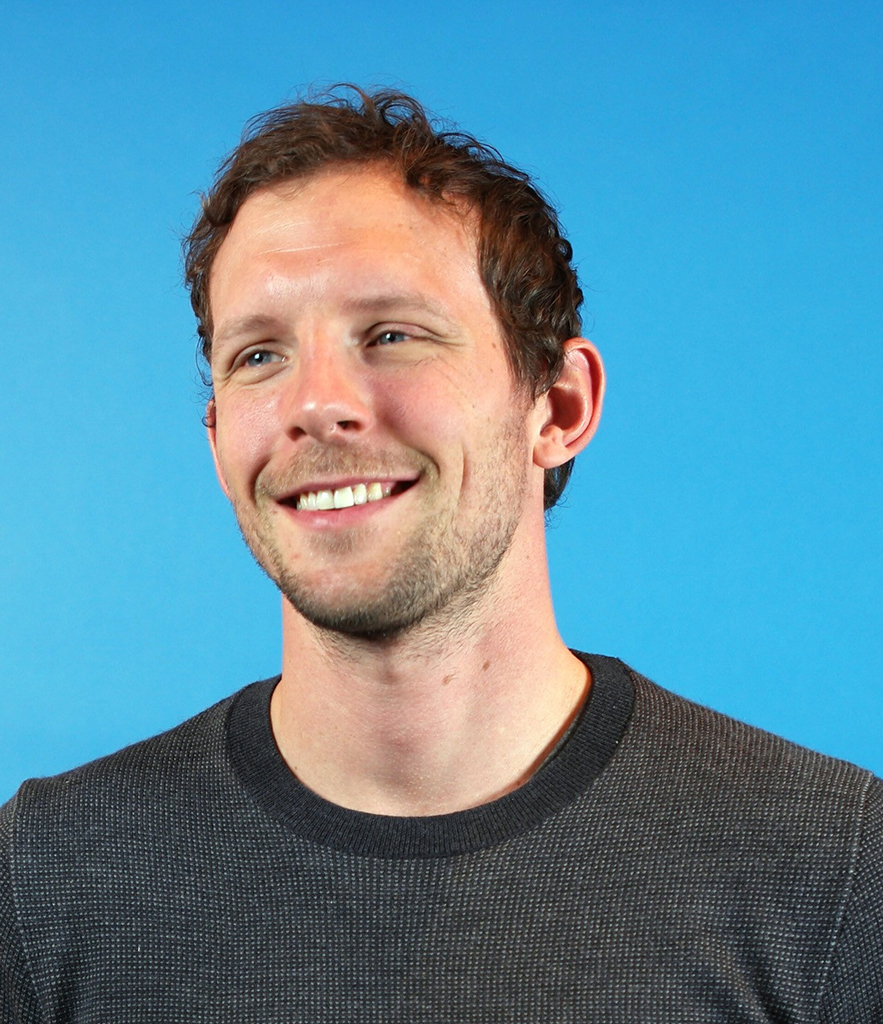
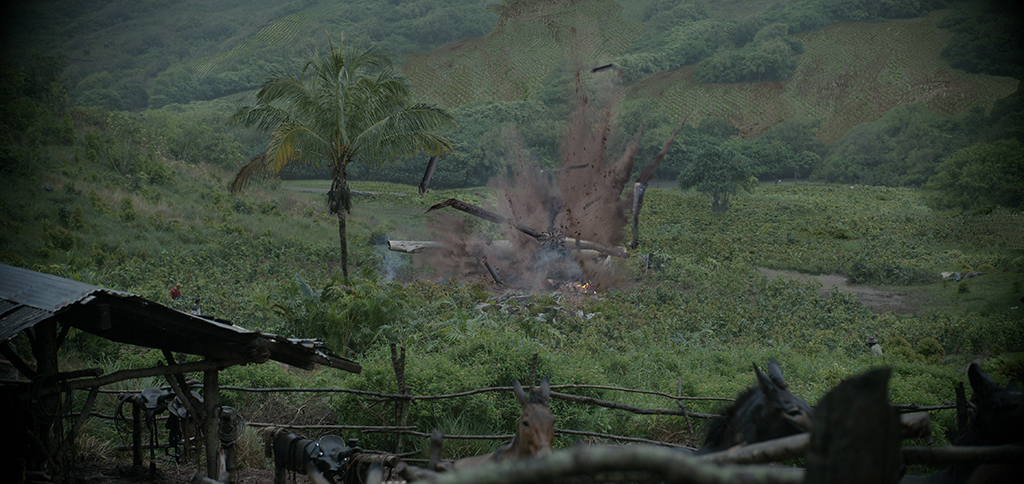
“That entire sequence of them flying up to the mountain and then crashing down was heavily previs’d so we could program the [helicopter] buck to simulate the same actions.”
—Chris Keller, VFX Supervisor, DNEG
Aerial background plates were combined with the foreground plates shot on the buck in a backlot, a few full CG shots, and practical helicopter footage to produce the final sequence. “The helicopter background plates were shot in the Sierra Mountains and were so high up that the sun was always out,” remarks Keller. “Hawaii, which covered a huge part of the journey through the Andes, was muggy, foggy and rainy, so a lot of that is overcast.” No sky replacements were inserted into the scenes. “We had to go with what was shot.”
A 3D environment was created for the entire valley with nine different variants of coca plants digitally constructed and rigged for simulations. “Whenever we have exterior shots of the helicopter flying and approaching the village [constructed by the art department] about half was CG plants and jungle. When we’re not close to the village that was all CG. Once the actors are down in the field, the vegetation around them was always real as was the crashed helicopter. But anything behind the helicopter was CG coca plants and jungle built on a real plate.
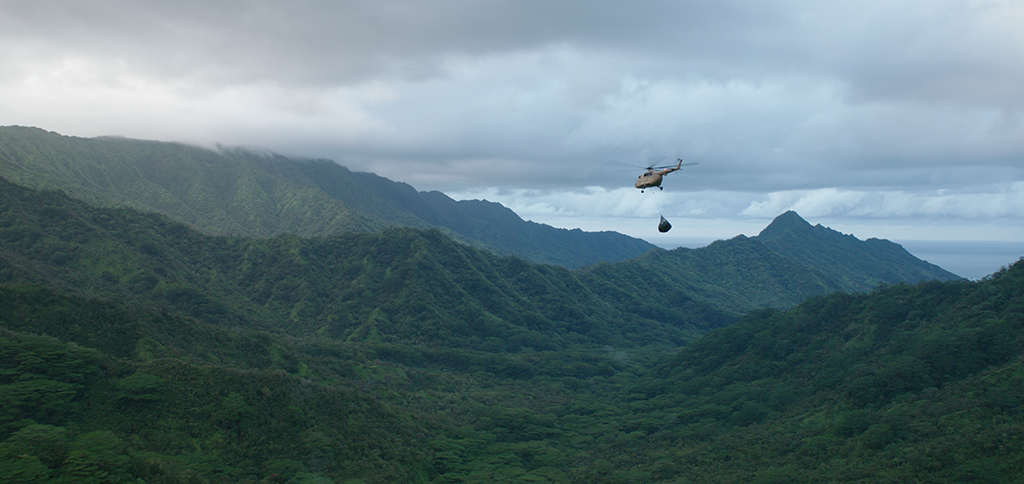
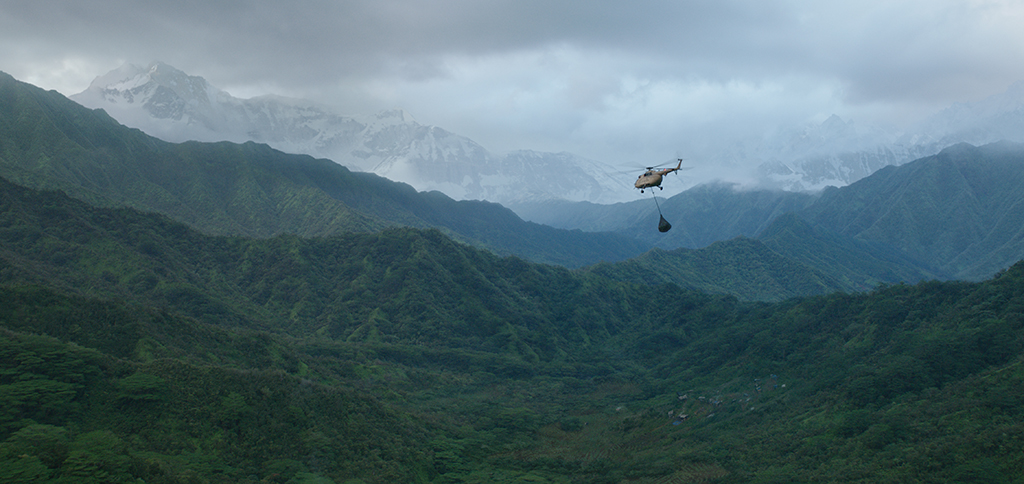
“Hawaii doesn’t have snowy mountains, which was something we needed to tell the story that they’re in the middle of the Andes. Mark had put a list together of locations in Argentina that he wanted us to cover, and we sent out a unit for a week that captured plenty photography of the Andes. We were able to dress those in the background.”
—Chris Keller, VFX Supervisor, DNEG
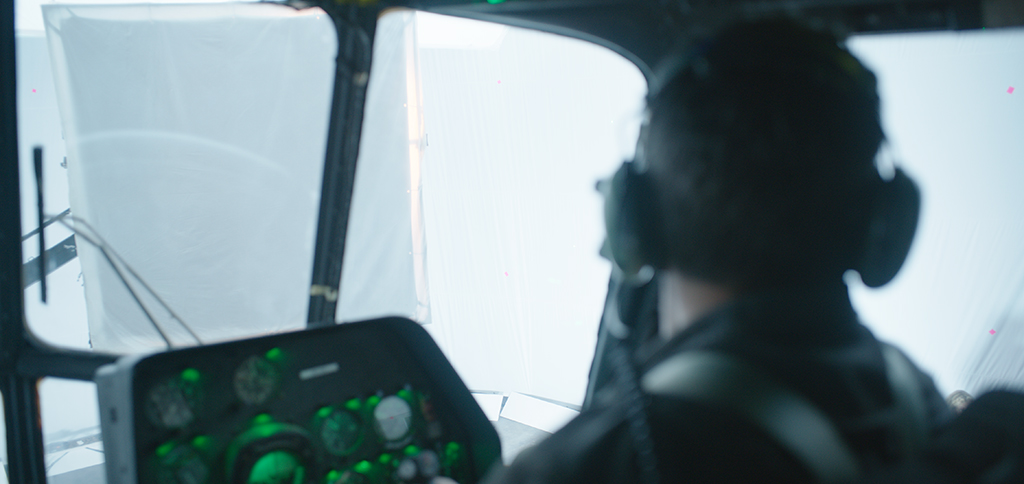
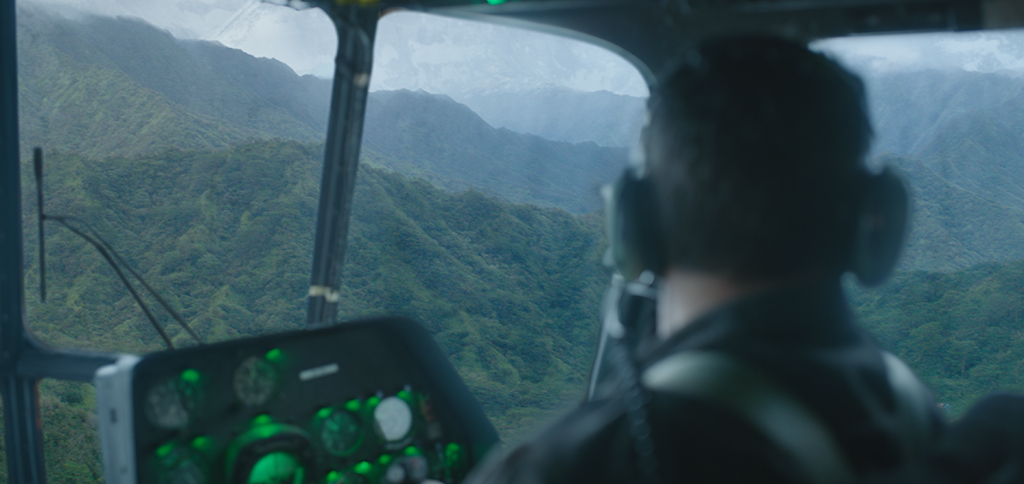
“Hawaii doesn’t have snowy mountains, which we needed to tell the story that they’re in the middle of the Andes,” continues Keller. “Mark had put a list together of locations in Argentina that he wanted us to cover, and we sent out a unit for a week that captured plenty photography of the Andes. We were able to dress those in the background.”
An actual Mi-8 helicopter was used during the production. “We tried to make the Mi-8 fly the general beats that were happening in the story. Because the Mi-8 is such a beast of a machine, it couldn’t do all of the necessary dramatic flying that was required. There were some shots that we could get away with adding smoke to the real helicopter, and in other ones we completely replaced it. When the full coca valley is revealed for the first time, that ended up being 90% CG. That establishing shot was based on a plate with a real flying helicopter, which was a great basis for the visual effects work; it allowed us at any moment to compare with the plate and to make sure that we were 100% photoreal.”
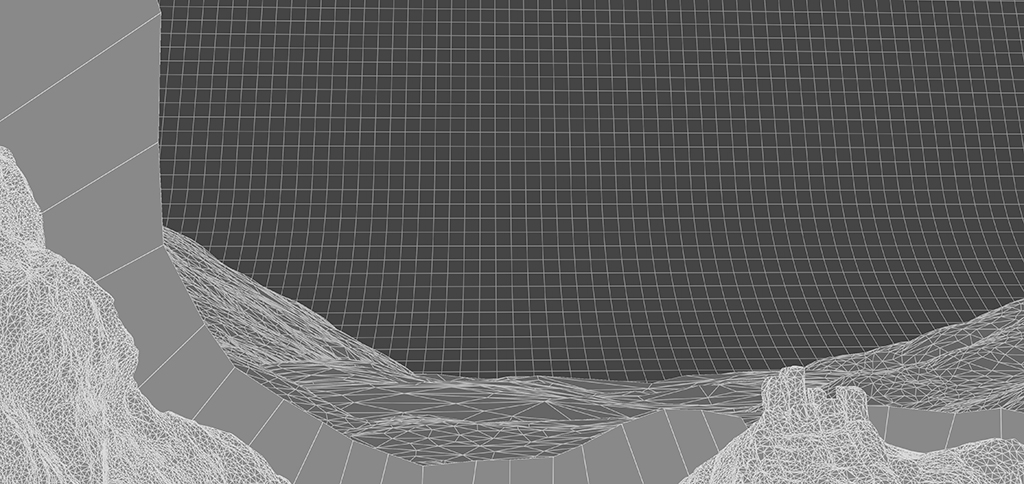
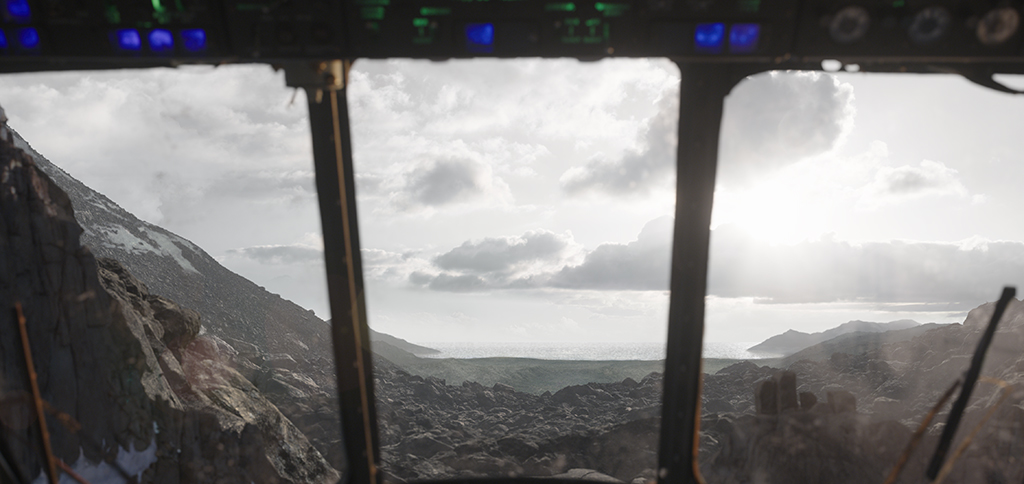
“There were bluescreen and greenscreen on set, but more often than not we didn’t end up using them. In fact, all of the helicopter interiors were shot on a white screen which was a strategic choice; it generated a natural light that was in line with the entire look of the film.”
—Chris Keller, VFX Supervisor, DNEG
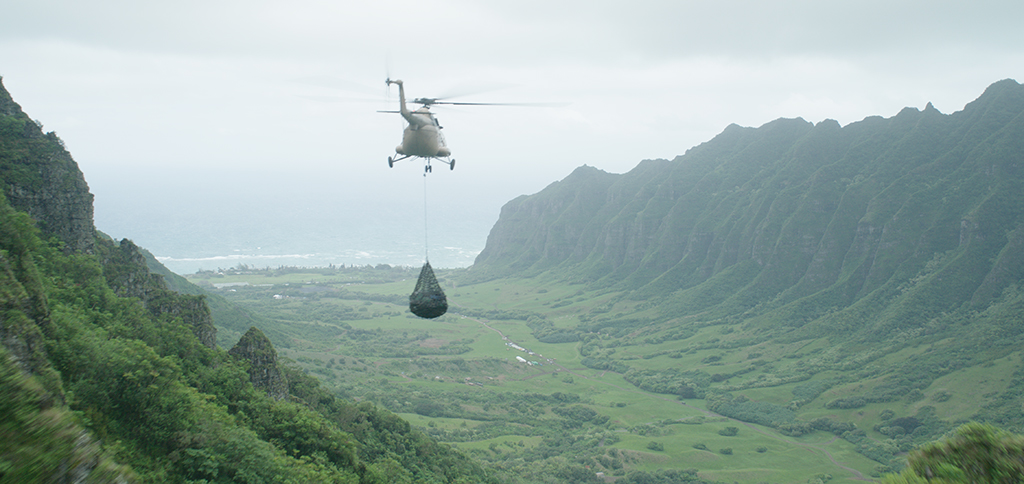
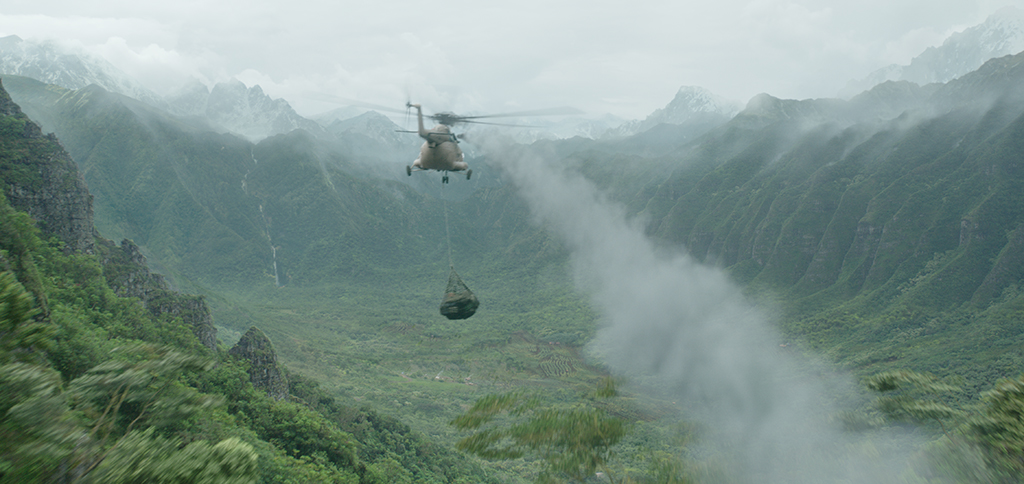
Huge helicopters like the Mi-8 don’t do that much even when they’re out of control. “When we’re first flying up to the ridge in the mountains before the crash and from there crashing down, the first iterations that we did had way too much banking, fishtailing and vibration. That made it look like a toy helicopter,” reveals Keller. “The Mi-8 is definitely redlining and struggling. You can feel the force and can see some vibration with the interior shots. However, in an exterior wide shot you barely see that. We kept reducing the amount of vibration until there was barely any left. We tried to tell the story mostly with sound design and smoke. Once the helicopter comes close to the ground in the coca valley and crashes, that’s a full CG takeover. The roto blades dig into the ground until it stops. That beat is based on a video Mark found of a real Mi-8 helicopter crashing.
“Because the helicopter is moving so slowly and heavily,” adds Keller, “the dust, debris and blades snapping off were the elements that conveyed the sense of danger. Our CG Effects Supervisor, Joe Long, came up with a fairly procedural setup that got us 70% of the way there.
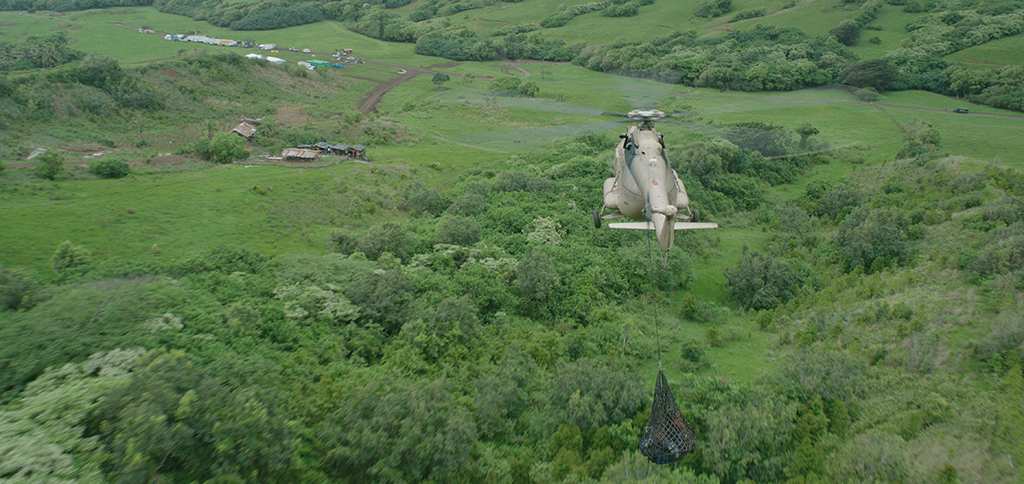
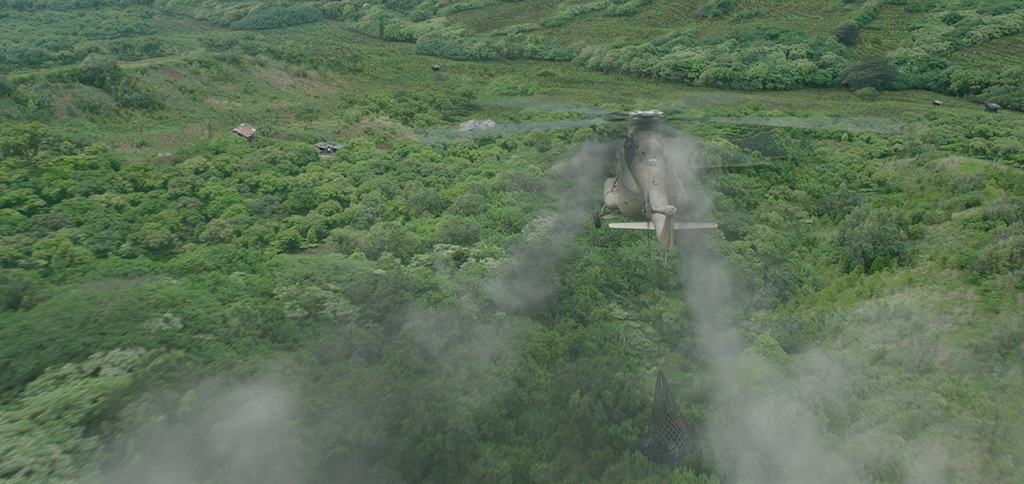
“When the full coca valley is revealed for the first time, that ended up being 90% CG. That establishing shot was based on a plate with a real flying helicopter, which was a great basis for the visual effects work; it allowed us at any moment to compare with the plate and to make sure that we were 100% photoreal.”
—Chris Keller, VFX Supervisor, DNEG
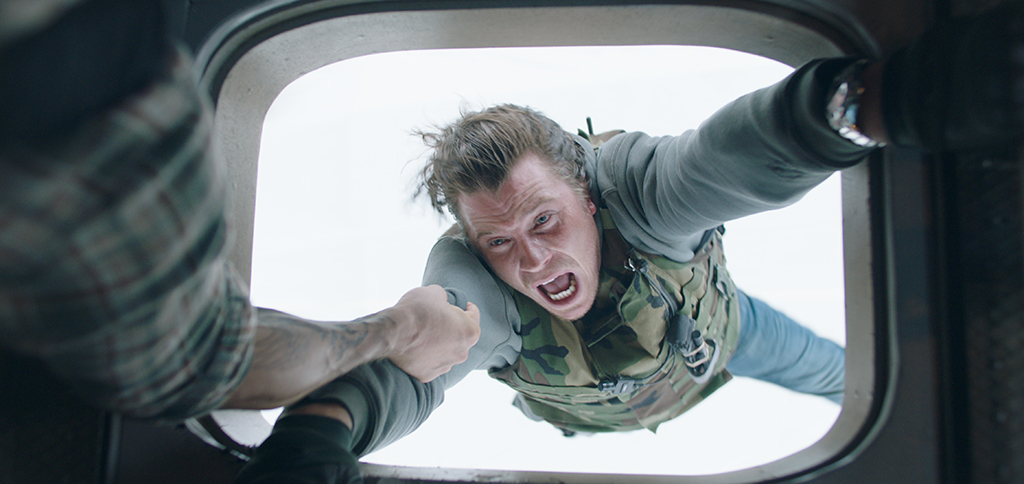
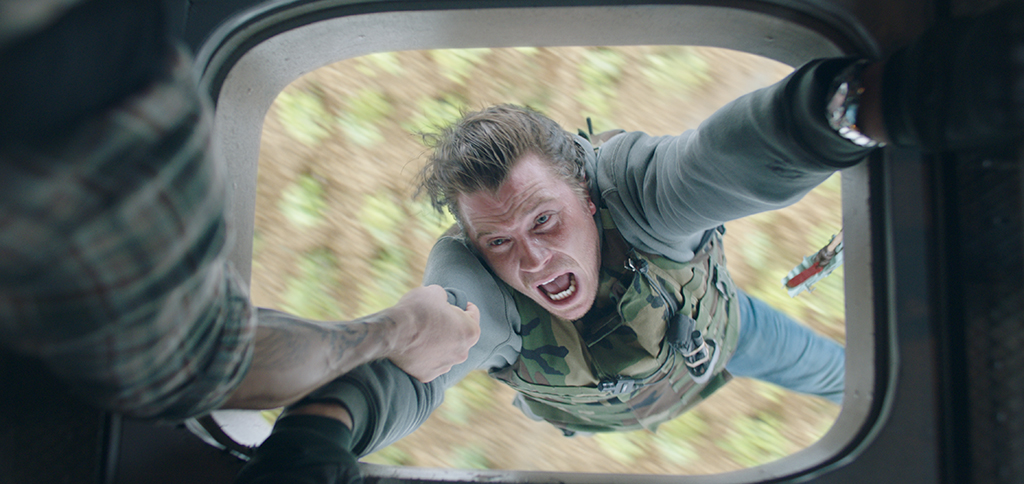
“We had plotted out the entire story of which gearbox is supposed to blow and which exhaust starts to smoke,” Keller recounts. “There were various locators attached to the helicopter, and you could turn them on and off. Each opening would emit some black and dark smoke that we could mix using deep compositing. We had a generic setup but there was certainly a lot of art direction required per shot. Real smoking helicopter footage was referenced. When the Mi-8 is flying it leaves smoke behind, but once on the ground and is fairly stationary and spinning, the downward action from the rotos interacts with the smoke and swirls it around. Scale was a huge problem. We definitely went around and around on a couple of these shots.”
In the story, the cargo net and Ben Miller (Garrett Hedlund) are both hanging out of the Mi-8. “The real helicopter only had one opening, so we could either have the stuntman or the money net,” notes Keller. “Any shot that you see both the money net and Ben hanging, one of them is always digital depending on the plate. We didn’t do much CG money net in the crash. We went around a few times on how much the money net should be swinging and dragging. But if you look at the real footage it is barely doing anything because everything is so heavy.”
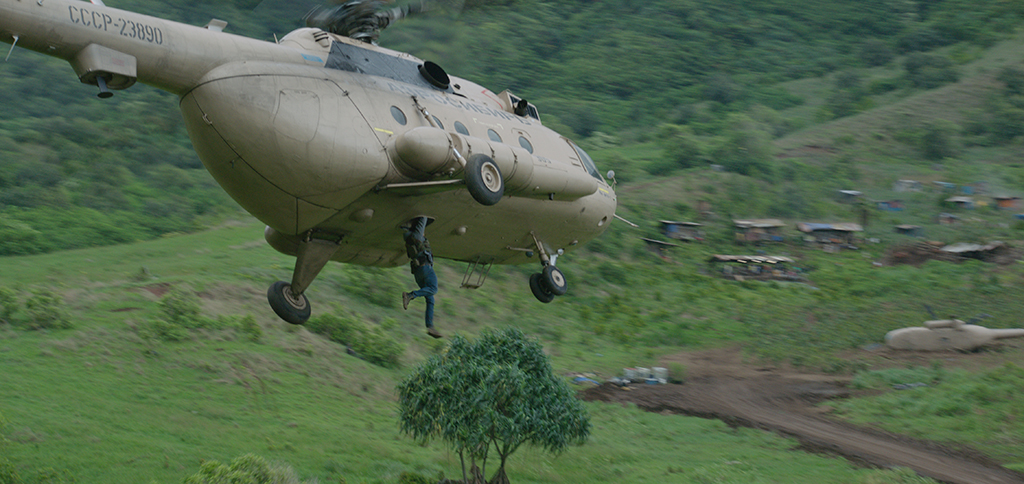
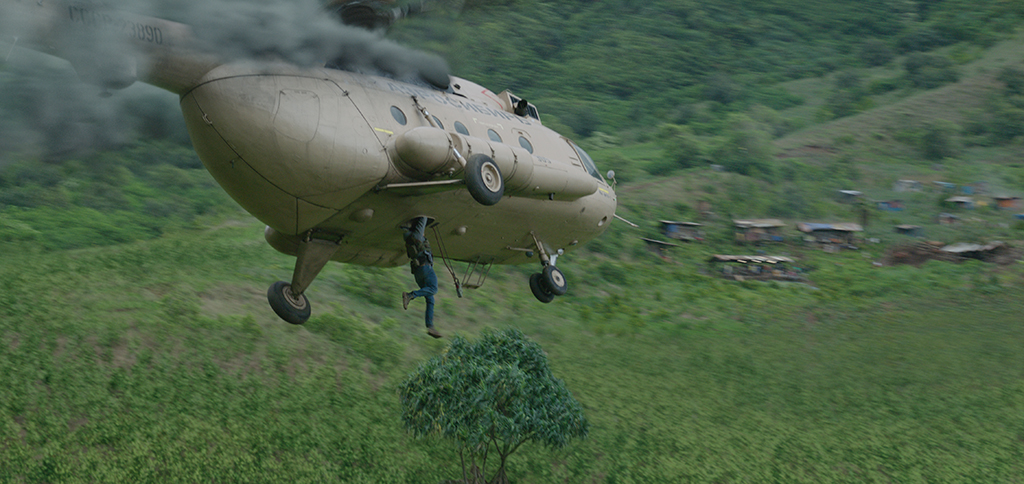
“Whenever we have exterior shots of the helicopter flying and approaching the village [constructed by the art department] about half was CG plants and jungle. When we’re not close to the village that was all CG. Once the actors are down in the field, the vegetation around them was always real as was the crashed helicopter. But anything behind the helicopter was CG coca plants and jungle built on a real plate.”
—Chris Keller, VFX Supervisor, DNEG
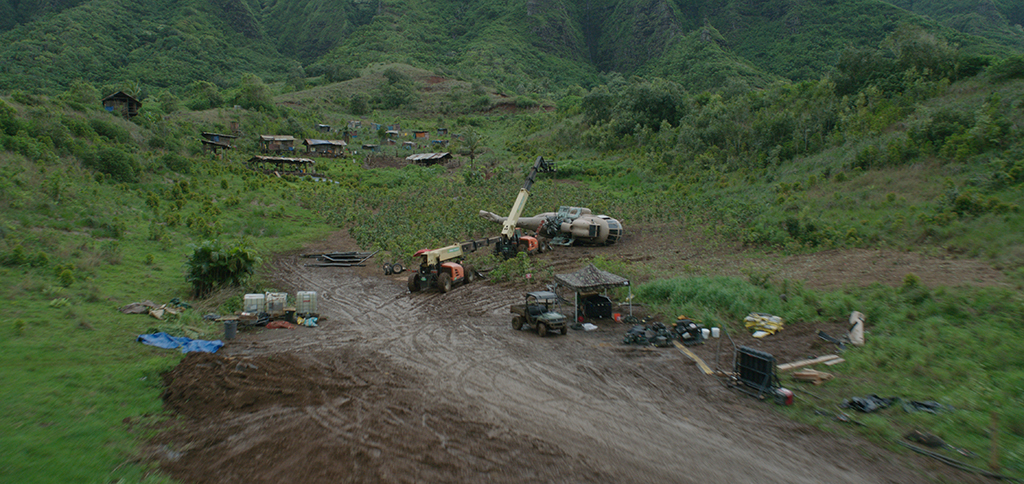
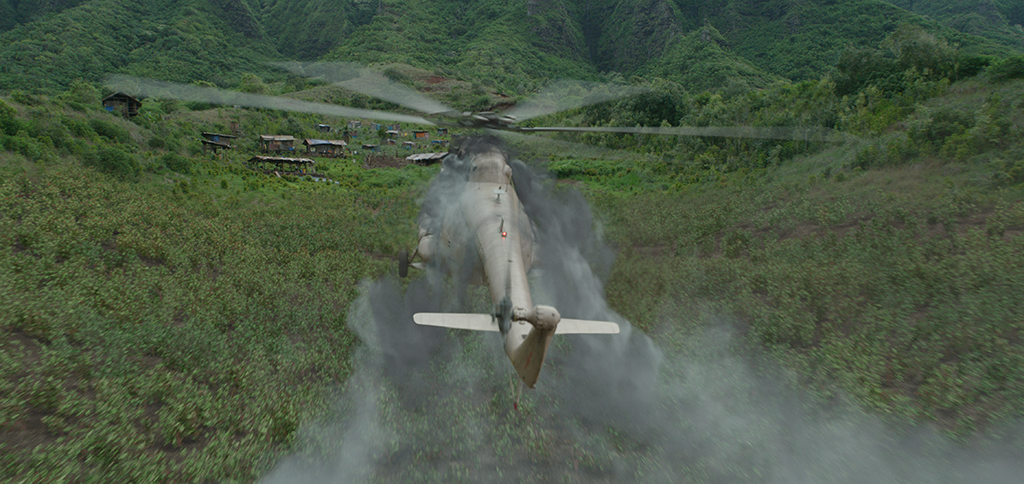
Conveying a sense of weight was critical. “Having the right position even without the net being overly animated tells your brain about the speed and weight of the helicopter. That was one of our biggest epiphanies. You don’t have to do much in terms of animation once you found a good pose, not just for the net but also for the helicopter. If you tilt it 10 degrees to the left and at the same time make it drift off to the right, your brain knows that something is off with the thing. You don’t have to have bank to the left, to the right, to the left again.”
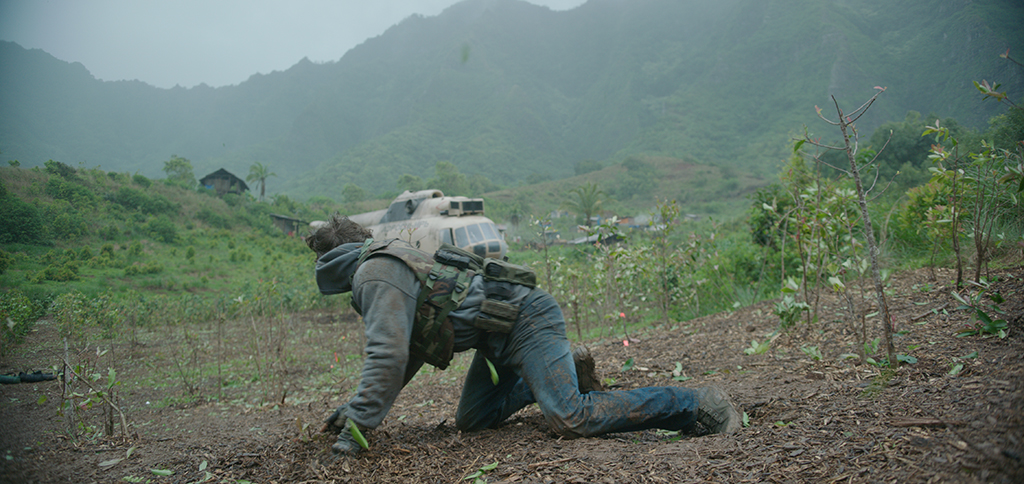
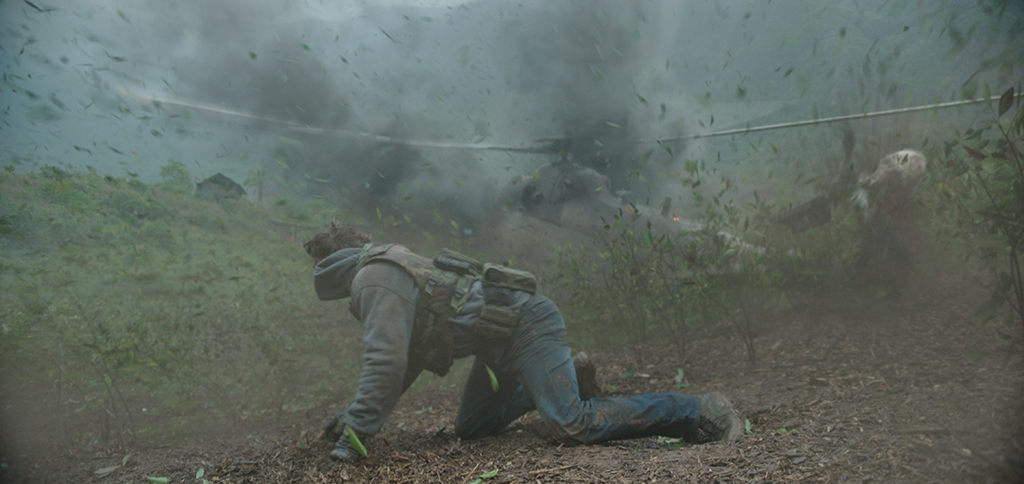
“Once the helicopter comes close to the ground in the coca valley and crashes, that’s a full CG takeover. The roto blades dig into the ground until it stops. That beat is based on a video [Production VFX Supervisor] Mark [Russell] found of a real Mi-8 helicopter crashing.”
—Chris Keller, VFX Supervisor, DNEG
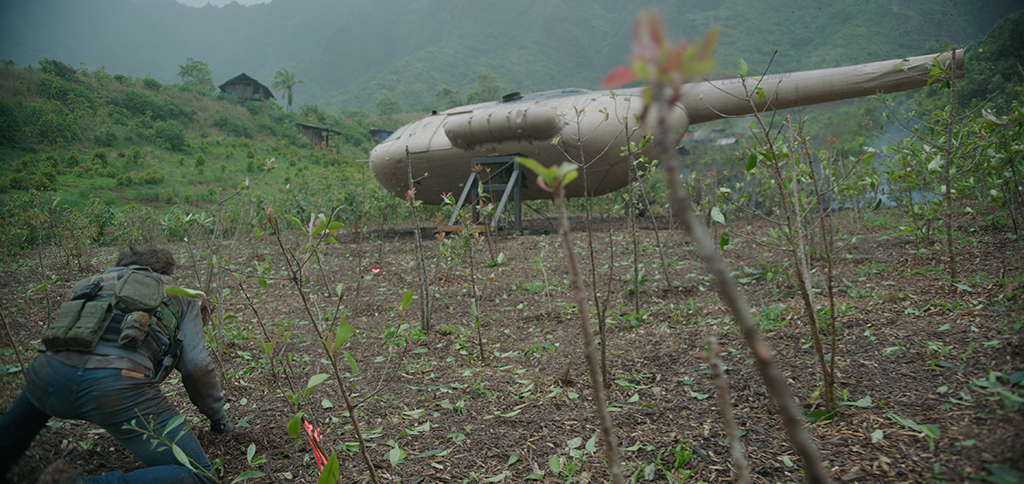
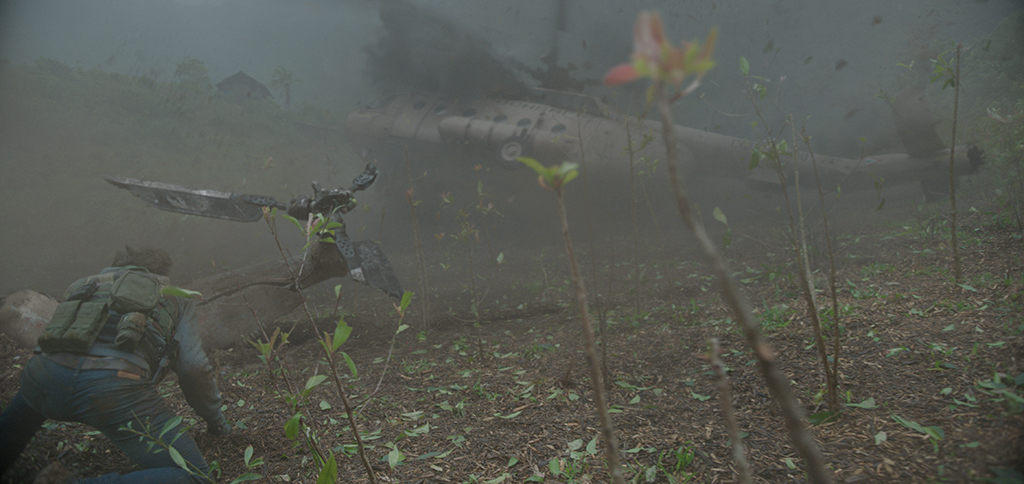
“The helicopter background plates were shot in the Sierra Mountains and were so high up that the sun was always out. Hawaii, which covered a huge part of the journey through the Andes, was muggy, foggy and rainy, so a lot of that is overcast. We had to go with what was shot.”
—Chris Keller, VFX Supervisor, DNEG
